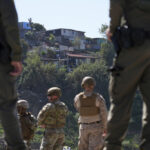With the midday sun blazing, an experimental orange and white F-16 fighter jet launched with a familiar roar that is a hallmark of U.S. airpower. But the aerial combat that followed was unlike any other: This F-16 was controlled by artificial intelligence, not a human pilot. And riding in the front seat was Air Force Secretary Frank Kendall.
Quick Read
- AI-Controlled F-16 Flight Test: Air Force Secretary Frank Kendall participated in an experimental flight at Edwards Air Force Base where an AI-controlled F-16, named Vista, demonstrated advanced aerial maneuvers in a dogfight scenario against a human-piloted F-16.
- Advances in Military Aviation: The test represents a significant shift in military aviation, highlighting the importance of AI technology in future air combat. The Air Force is planning for an AI-enabled fleet of over 1,000 unmanned warplanes by 2028.
- Operational Security and AI Capability: The flight was conducted under strict operational security, with media present under conditions that delayed reporting until after the event. The AI demonstrated capabilities include high-speed maneuvers and combat tactics, convincing Kendall of its potential to autonomously make wartime decisions about weapon deployment.
- Ethical and Security Concerns: The use of AI in combat raises ethical concerns, particularly regarding the autonomous use of lethal force. Organizations like the International Committee of the Red Cross have expressed urgent calls for regulation due to the potential for AI to make life-and-death decisions without human oversight.
- Strategic and Economic Drivers: The shift towards AI-enhanced unmanned aircraft is motivated by security advantages, potential cost reductions, and strategic needs, especially considering potential conflicts with nations like China, which is also advancing in unmanned weapons.
- Development and Testing: The AI on Vista undergoes continuous learning from simulated and real-flight data, enhancing its capabilities rapidly—already showing the ability to surpass human pilots in combat scenarios.
- Future of Air Combat: This development points to a future where AI plays a crucial role in maintaining air superiority, with ongoing debates about the ethical implications of autonomous combat systems.
The Associated Press has the story:
AI-controlled fighter jet took Air Force leader for a historic ride. What that means for war
Newslooks- EDWARDS AIR FORCE BASE, Calif. (AP) —
With the midday sun blazing, an experimental orange and white F-16 fighter jet launched with a familiar roar that is a hallmark of U.S. airpower. But the aerial combat that followed was unlike any other: This F-16 was controlled by artificial intelligence, not a human pilot. And riding in the front seat was Air Force Secretary Frank Kendall.
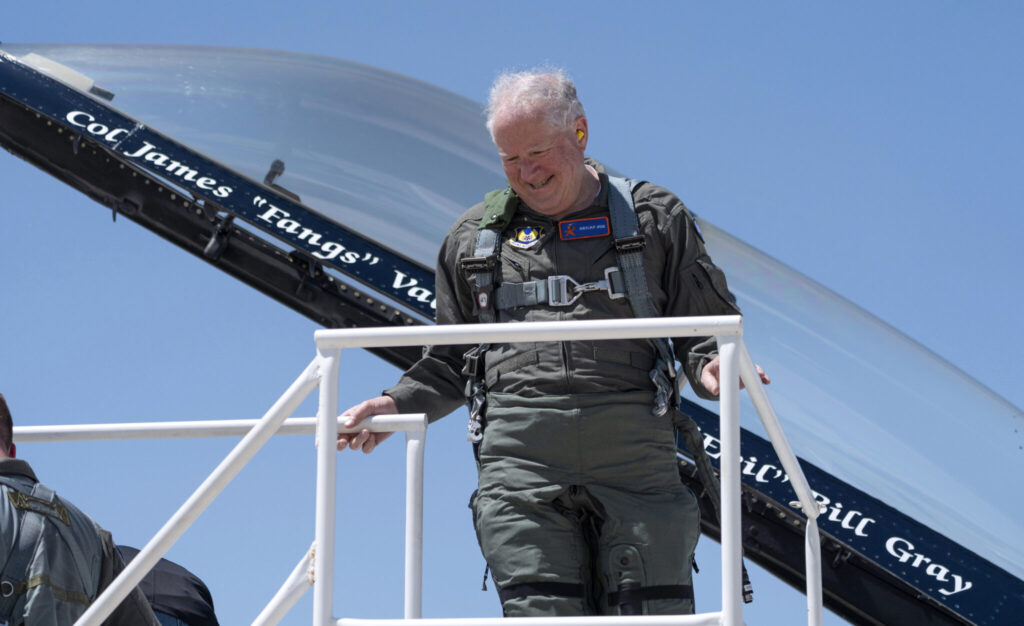
AI marks one of the biggest advances in military aviation since the introduction of stealth in the early 1990s, and the Air Force has aggressively leaned in. Even though the technology is not fully developed, the service is planning for an AI-enabled fleet of more than 1,000 unmanned warplanes, the first of them operating by 2028.
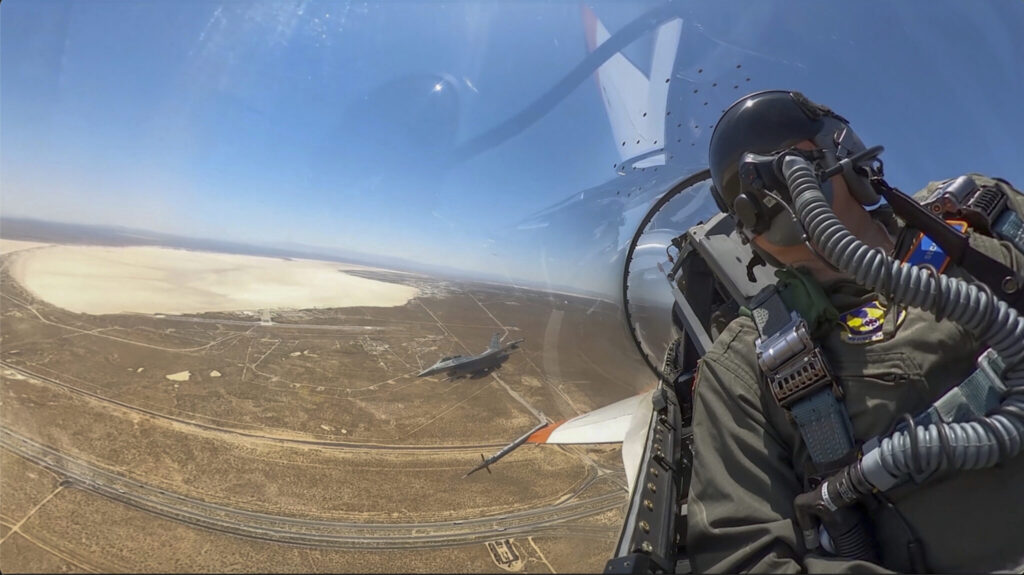
It was fitting that the dogfight took place at Edwards Air Force Base, a vast desert facility where Chuck Yeager broke the speed of sound and the military has incubated its most secret aerospace advances. Inside classified simulators and buildings with layers of shielding against surveillance, a new test-pilot generation is training AI agents to fly in war. Kendall traveled here to see AI fly in real time and make a public statement of confidence in its future role in air combat.
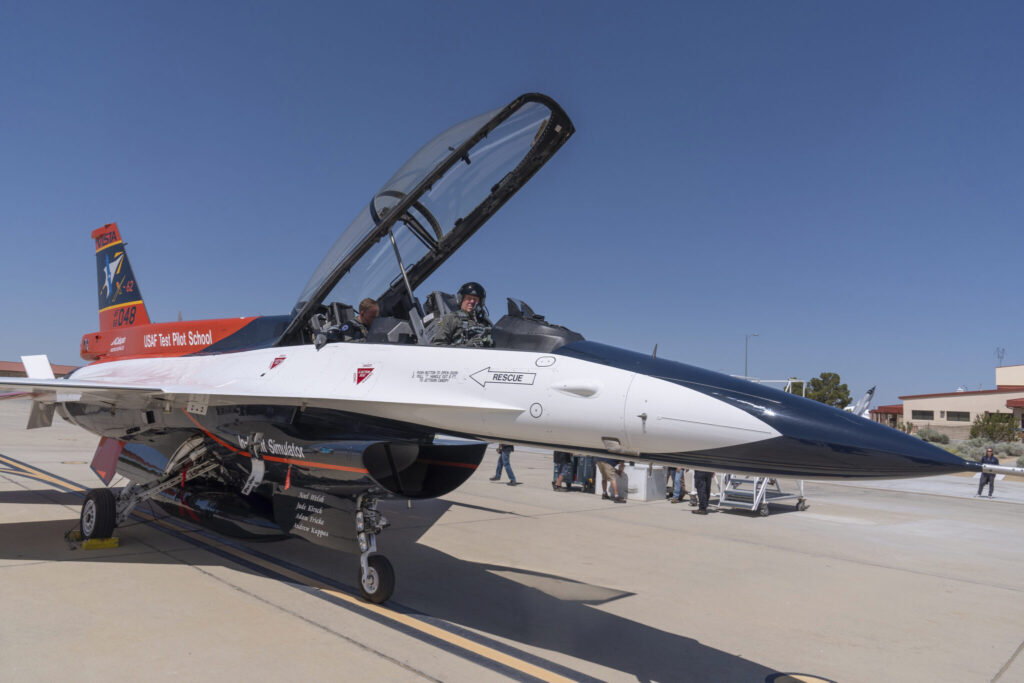
“It’s a security risk not to have it. At this point, we have to have it,” Kendall said in an interview with The Associated Press after he landed. The AP, along with NBC, was granted permission to witness the secret flight on the condition that it would not be reported until it was complete because of operational security concerns.
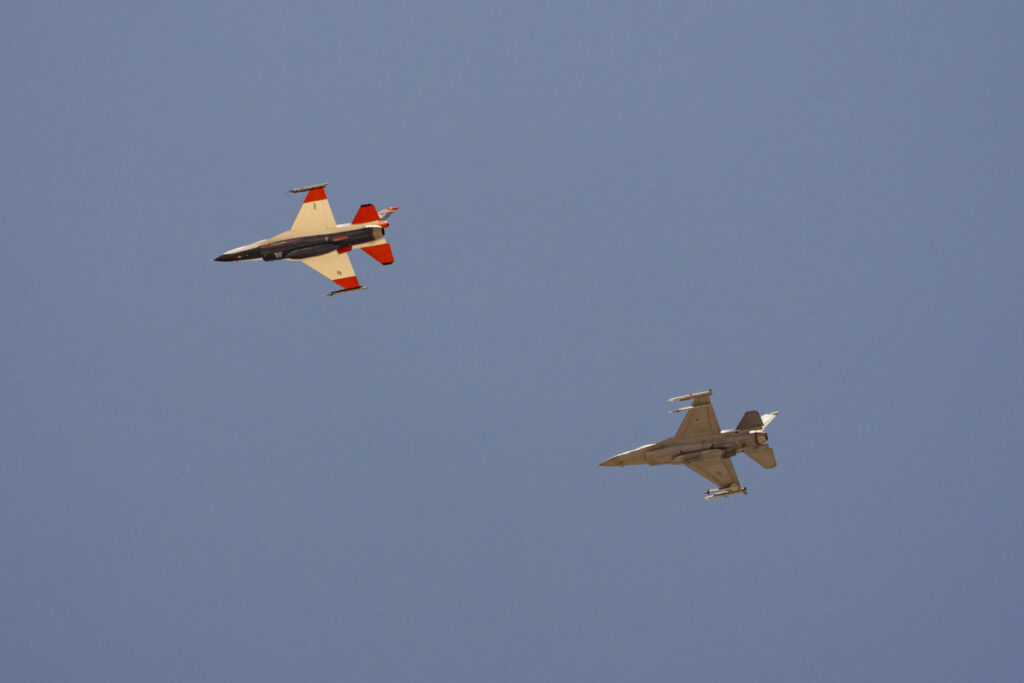
The AI-controlled F-16, called Vista, flew Kendall in lightning-fast maneuvers at more than 550 miles an hour that put pressure on his body at five times the force of gravity. It went nearly nose to nose with a second human-piloted F-16 as both aircraft raced within 1,000 feet of each other, twisting and looping to try force their opponent into vulnerable positions.
At the end of the hourlong flight, Kendall climbed out of the cockpit grinning. He said he’d seen enough during his flight that he’d trust this still-learning AI with the ability to decide whether or not to launch weapons in war.
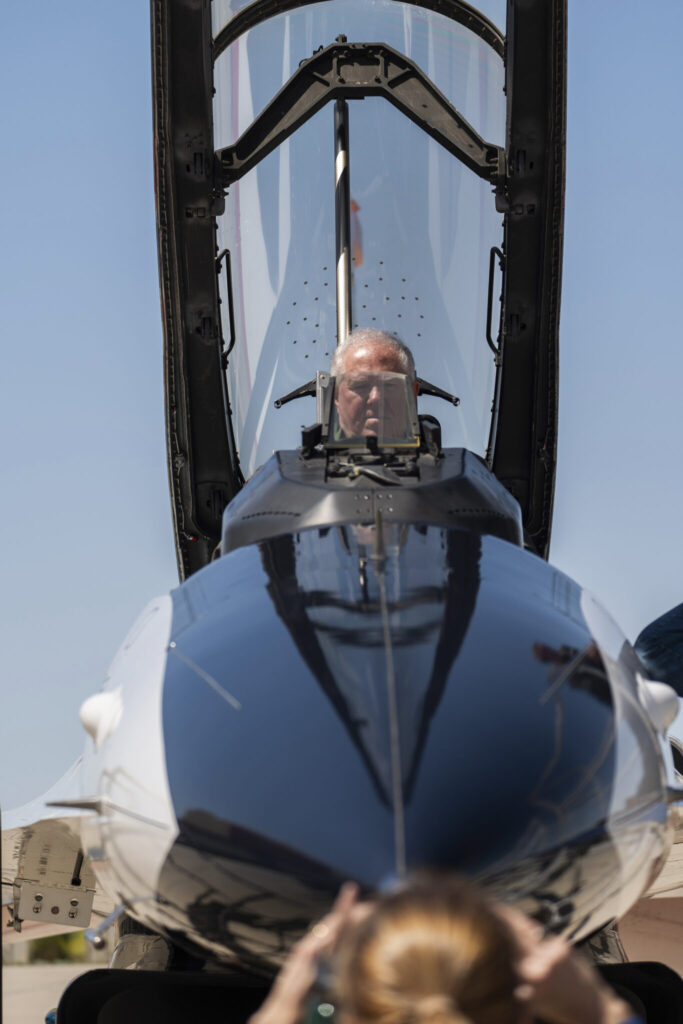
There’s a lot of opposition to that idea. Arms control experts and humanitarian groups are deeply concerned that AI one day might be able to autonomously drop bombs that kill people without further human consultation, and they are seeking greater restrictions on its use.
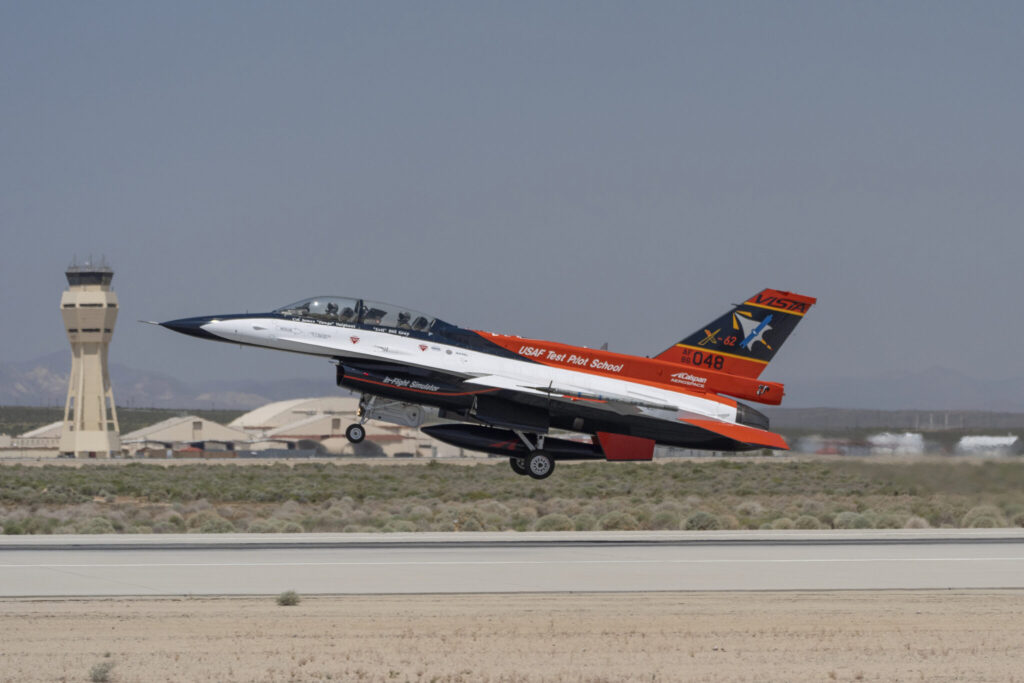
“There are widespread and serious concerns about ceding life-and-death decisions to sensors and software,” the International Committee of the Red Cross has warned. Autonomous weapons “are an immediate cause of concern and demand an urgent, international political response.”
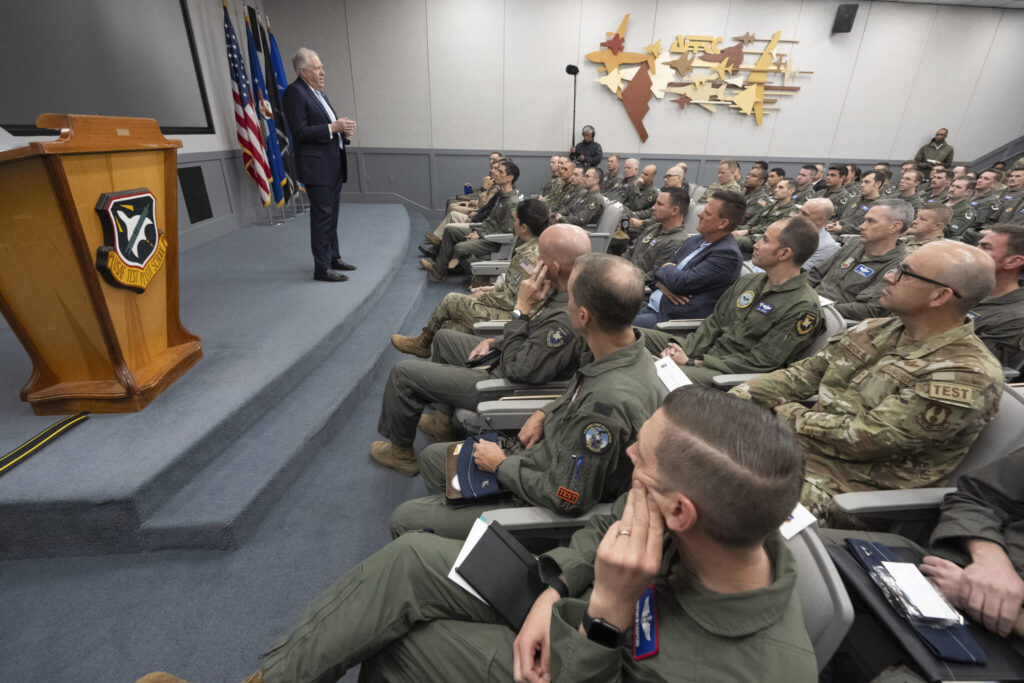
The military’s shift to AI-enabled planes is driven by security, cost and strategic capability. If the U.S. and China should end up in conflict, for example, today’s Air Force fleet of expensive, manned fighters will be vulnerable because of gains on both sides in electronic warfare, space and air defense systems. China’s air force is on pace to outnumber the U.S. and it is also amassing a fleet of flying unmanned weapons.
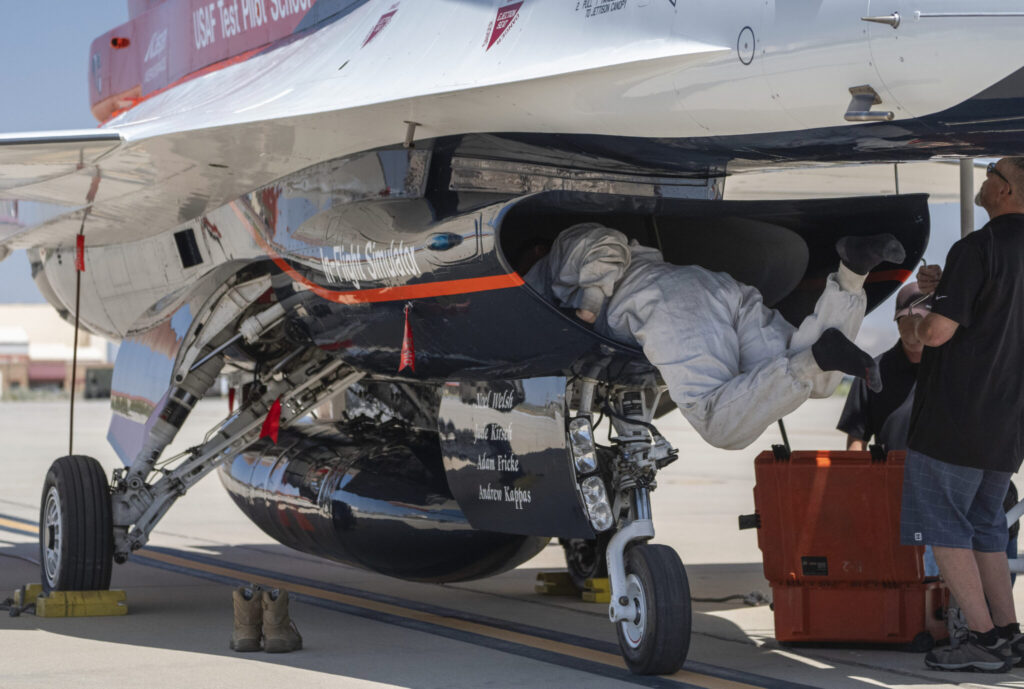
Future war scenarios envision swarms of American unmanned aircraft providing an advance attack on enemy defenses to give the U.S. the ability to penetrate an airspace without high risk to pilot lives. But the shift is also driven by money. The Air Force is still hampered by production delays and cost overruns in the F-35 Joint Strike Fighter, which will cost an estimated of $1.7 trillion.
Smaller and cheaper AI-controlled unmanned jets are the way ahead, Kendall said.
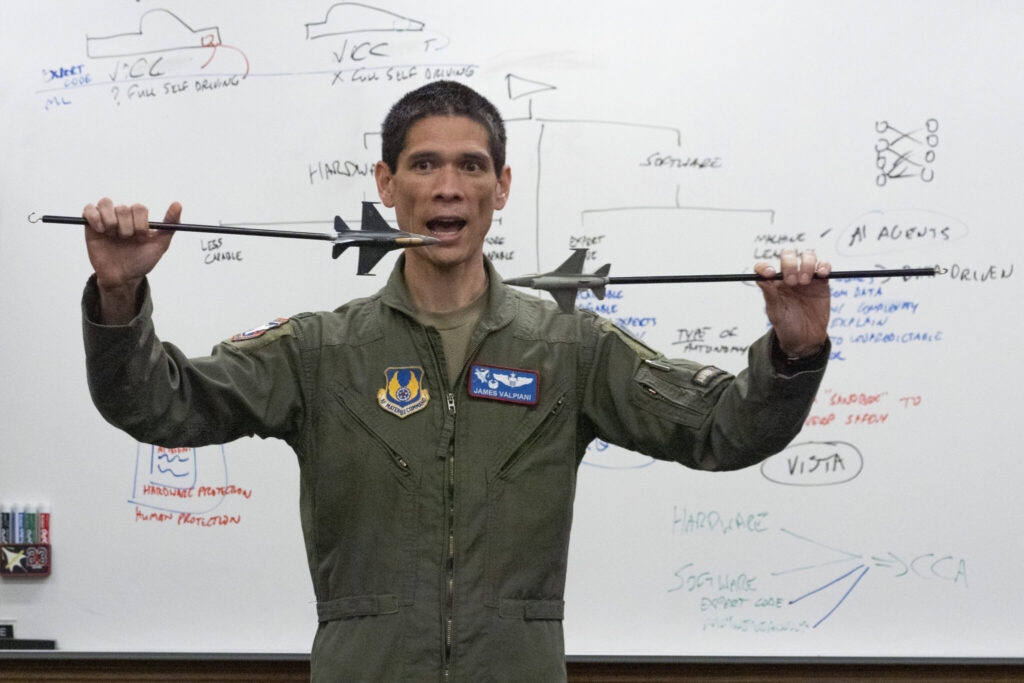
Vista’s military operators say no other country in the world has an AI jet like it, where the software first learns on millions of data points in a simulator, then tests its conclusions during actual flights. That real-world performance data is then put back into the simulator where the AI then processes it to learn more.
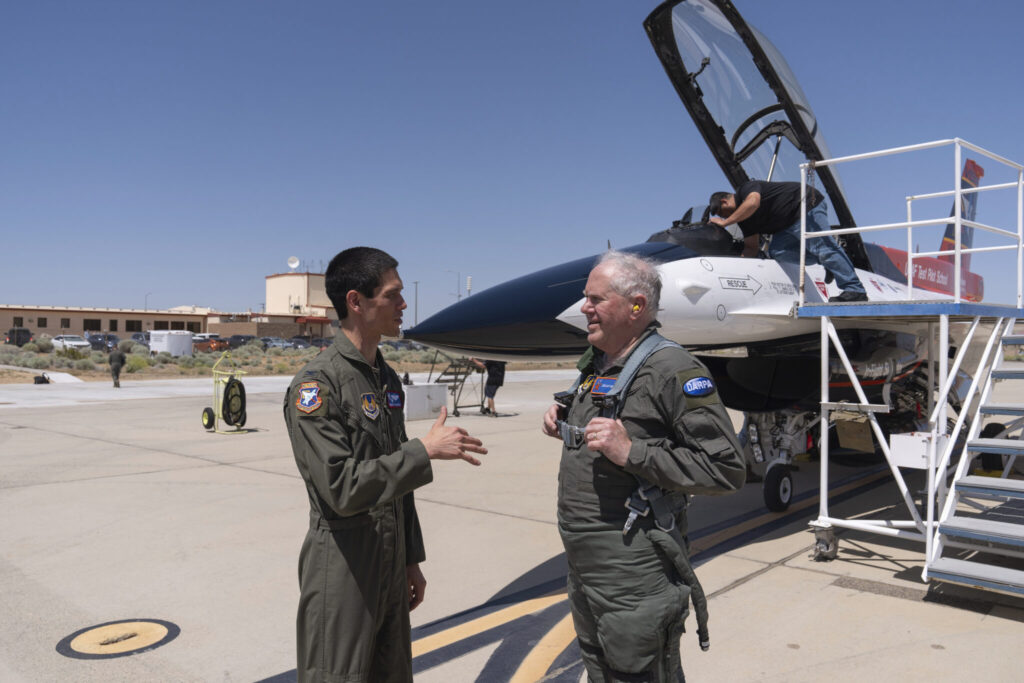
China has AI, but there’s no indication it has found a way to run tests outside a simulator. And, like a junior officer first learning tactics, some lessons can only be learned in the air, Vista’s test pilots said.
Until you actually fly, “it’s all guesswork,” chief test pilot Bill Gray said. “And the longer it takes you to figure that out, the longer it takes before you have useful systems.”
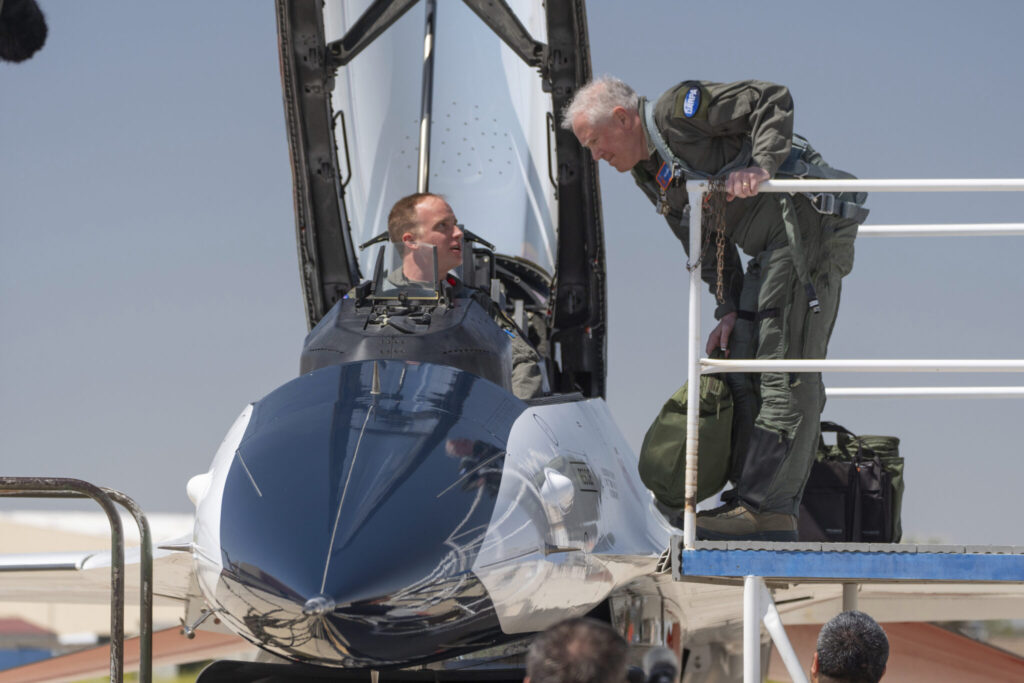
Vista flew its first AI-controlled dogfight in September 2023, and there have only been about two dozen similar flights since. But the programs are learning so quickly from each engagement that some AI versions getting tested on Vista are already beating human pilots in air-to-air combat.
The pilots at this base are aware that in some respects, they may be training their replacements or shaping a future construct where fewer of them are needed.
But they also say they would not want to be up in the sky against an adversary that has AI-controlled aircraft if the U.S. does not also have its own fleet.
“We have to keep running. And we have to run fast,” Kendall said.



